Art of Snake Plant Care: Keep It Healthy Year-Round
What is a Snake Plant?
The snake plant, scientifically known as Sansevieria trifasciata, is an ornamental plant commonly grown in gardens or indoors to beautify spaces. It typically grows to a height of about 50-60 cm.
The snake plant is characterized by its flat, succulent leaves that appear sharp but are actually soft to the touch. The leaves are green with yellow edges running from the base to the tip. When it blooms, the flowers grow in clusters from the base, and it also produces small round fruits.
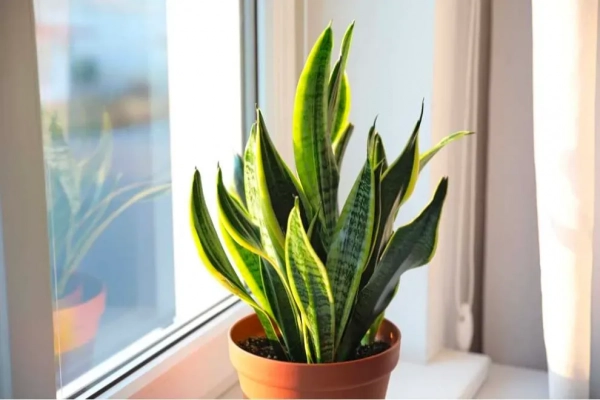
The snake plant is native to tropical regions and has over 70 different species, such as the Tiger Snake Plant, Thai Snake Plant, and Green Snake Plant. The most popular varieties today are the Thai Snake Plant and the Tiger Snake Plant.
Types of Snake Plants
There are many types of snake plants, and depending on their shape and height, you can easily choose a suitable pot to decorate your living space:
1. Striped Snake Plant
This type has alternating stripes of dark and light green with yellow edges from the base to the tip. It is suitable for growing indoors or for decorating spaces such as balconies or gardens, as its leaves can grow over 1 meter in length.
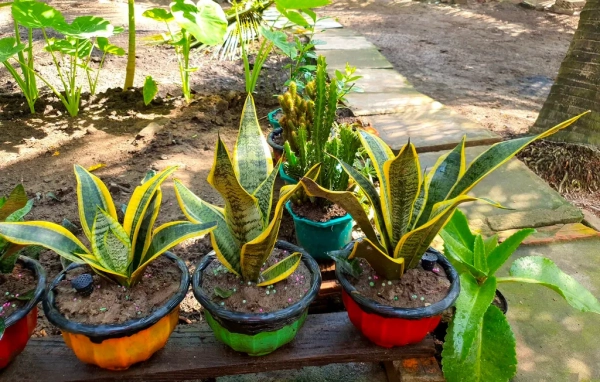
2. Golden Snake Plant
This variety is favored by office workers because it is easy to care for, has a small size, and its leaves spread out beautifully as they grow, rather than standing upright.

3. White Snake Plant
Considered the "beauty queen" of snake plants, the White Snake Plant has eye-catching colors and spreads outward. It is suitable for decorating homes with modern and luxurious designs.

4. Other Types of Snake Plants
In addition to the above varieties, other options include the Green Striped Snake Plant, Green Thai Snake Plant, Yellow Thai Snake Plant, and Robusta Snake Plant.
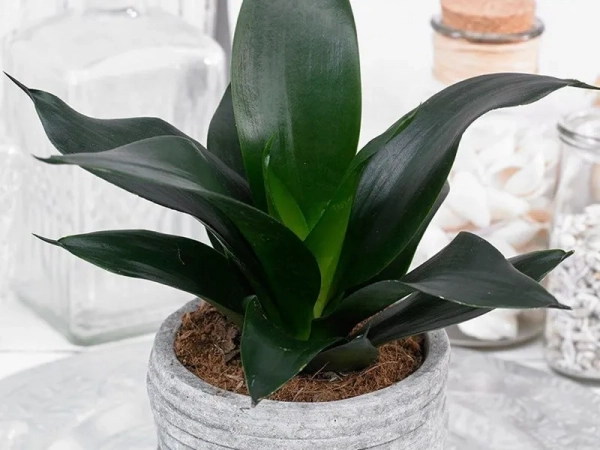
Feng Shui Meaning of the Snake Plant
In both Western and Eastern cultures, the snake plant is believed to ward off evil, prevent curses, dispel bad omens, and bring good luck and prosperity to its owner.
The snake plant is also a meaningful gift that symbolizes a wish for good fortune to friends and loved ones, success in business partnerships, prosperity for the new year, and stability for a new home.
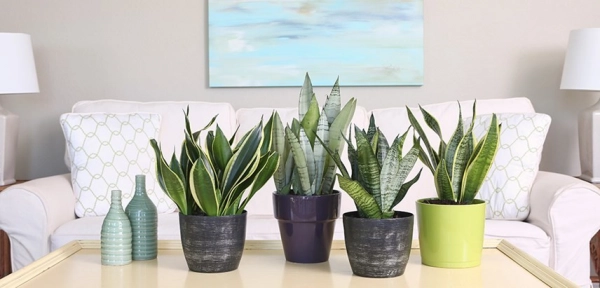
According to Feng Shui, the snake plant has the power to drive away evil spirits. Its leaves resemble sharp blades and are thought to embody the strength of a lion, helping to repel negative energies and reduce misfortunes for the family. Thus, you often see snake plants grown as a hedge or placed at the entrances of buildings.
Health Benefits of the Snake Plant
1. Relieves Asthma
For asthma sufferers, mixing snake plant gel with hot water and inhaling the steam helps anti-inflammatory agents reach the nasal and throat linings, preventing prolonged asthma attacks and aiding in easier breathing.
2. Treats Digestive Issues
Compounds like aloin, aloe-emodin, and barbaloin found in the leaves of the snake plant can help improve stomach function and stimulate digestion. Snake plant leaves can be juiced to treat acid reflux, bloating, indigestion, and reduce internal heat.
3. Reduces Stress and Fatigue
Many people who work in offices tend to feel tired and stressed. The snake plant can help alleviate work pressure by adding fresh color and a calming atmosphere.
4. Promotes Better Sleep
Unlike other plants, the snake plant absorbs toxins and releases pure oxygen at night, providing a cleaner environment that promotes deeper and more restful sleep.
5. Reduces Skin Allergies
The snake plant has properties similar to aloe vera, such as antibacterial and anti-inflammatory effects, and can be used to treat some skin allergies. When the skin is burned, blistered, sunburned, or scratched, the plant serves as a natural remedy to disinfect and prevent infections.
6. Eliminates Airborne Toxins
According to NASA, the snake plant is effective in purifying the air by absorbing environmental pollutants and 107 toxins, including carcinogens like nitrogen oxide and formaldehyde. It can be planted in public spaces like office buildings, hospitals, or homes to improve air quality, disinfect the environment, and gradually reduce symptoms like coughs, runny noses, and sneezes caused by airborne bacteria.
Potential Harm of the Snake Plant
The snake plant is a popular ornamental plant often grown in offices, living rooms, and even bedrooms. However, some information suggests that the leaves contain toxins and that the plant should not be grown indoors if there are children.
While the snake plant offers many benefits, it also has a minor downside: its leaves contain toxic substances. Ingesting the leaves can cause stomach pain, nausea, and diarrhea. The symptoms of poisoning from the snake plant are similar to those of common digestive disorders. Pets, like dogs and cats, may also experience similar symptoms if they eat the leaves. This is considered the only known harm of the snake plant to date.
Learn more: Common Issues with Snake Plants and How to Fix Them
Some Tips for Planting and Caring for Snake Plants
By following these guidelines, you can have a perfect snake plant:
- Watering: Snake plants originate from arid regions, so they are highly drought-tolerant and do not require much water. When caring for your snake plant, avoid overwatering. Instead, water the plant once a week or every two weeks, depending on the weather conditions. Use a spray bottle to mist the plant when watering.
- Light: The snake plant prefers shaded areas and low light rather than direct sunlight. Choose spots with minimal sunlight for planting. If the plant is kept indoors, expose it to sunlight every 2-3 months, preferably between 7-9 a.m.
- Temperature and Nutrition: The ideal temperature for snake plant growth is between 20-30 degrees Celsius. In winter, supplement the plant with nutrients by applying fertilizer to keep it healthy. Phosphorus can be applied every 3 to 4 months, with fertilizer placement about 10 cm from the base.
FAQs About Snake Plants
Is the Snake Plant Poisonous?
The leaves of the snake plant contain saponins, which can cause skin and mucous membrane irritation. Chewing or swallowing the leaves can lead to symptoms such as nausea, vomiting, diarrhea, stomach pain, mouth swelling, tongue swelling, and difficulty breathing. The risk of poisoning is higher in children and pets due to their tendency to chew or bite the leaves. However, the plant is only harmful if consumed in large quantities. To ensure safety, keep the snake plant out of reach of children and pets.
Where Should You Place a Snake Plant in the House?
Snake plants are often placed in the living room to reflect the homeowner's style and personality. It is suitable to position it next to the TV stand, sofa, or at either side of the entrance to ward off bad luck and bring good fortune. The room's atmosphere will be enhanced with the presence of a snake plant, which also absorbs harmful substances like cigarette smoke and nitrogen oxides, providing more oxygen for human respiration.
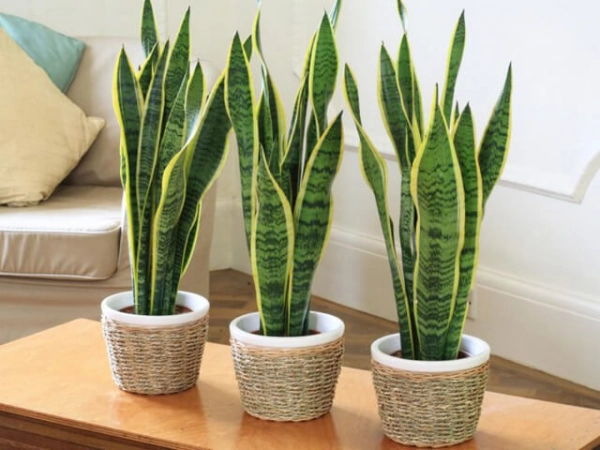
How to Know if Your Snake Plant Needs Water?
Snake plants are drought-tolerant, but you should monitor the signs of water deficiency. If the plant is lacking water, its leaves may become dry, wrinkled, and lose their vibrant green color. Additionally, the leaf tips might dry out and turn brown. To prevent this, water the plant when the soil in the pot is completely dry, typically every 2-4 weeks, depending on environmental conditions.
Tags: Indoor Ornamental Plants | Outdoor Ornamental Plants | Bonsai Plants | Aquatic Ornamental Plants | Miniature Ornamental Plants |




















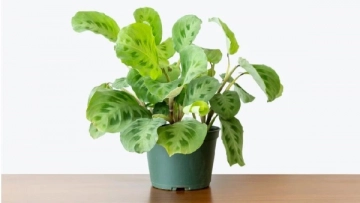



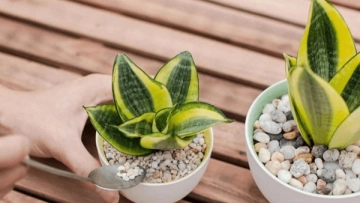
Elena Ciobanu
September 29 , 2024
Cam Giang
September 29 , 2024